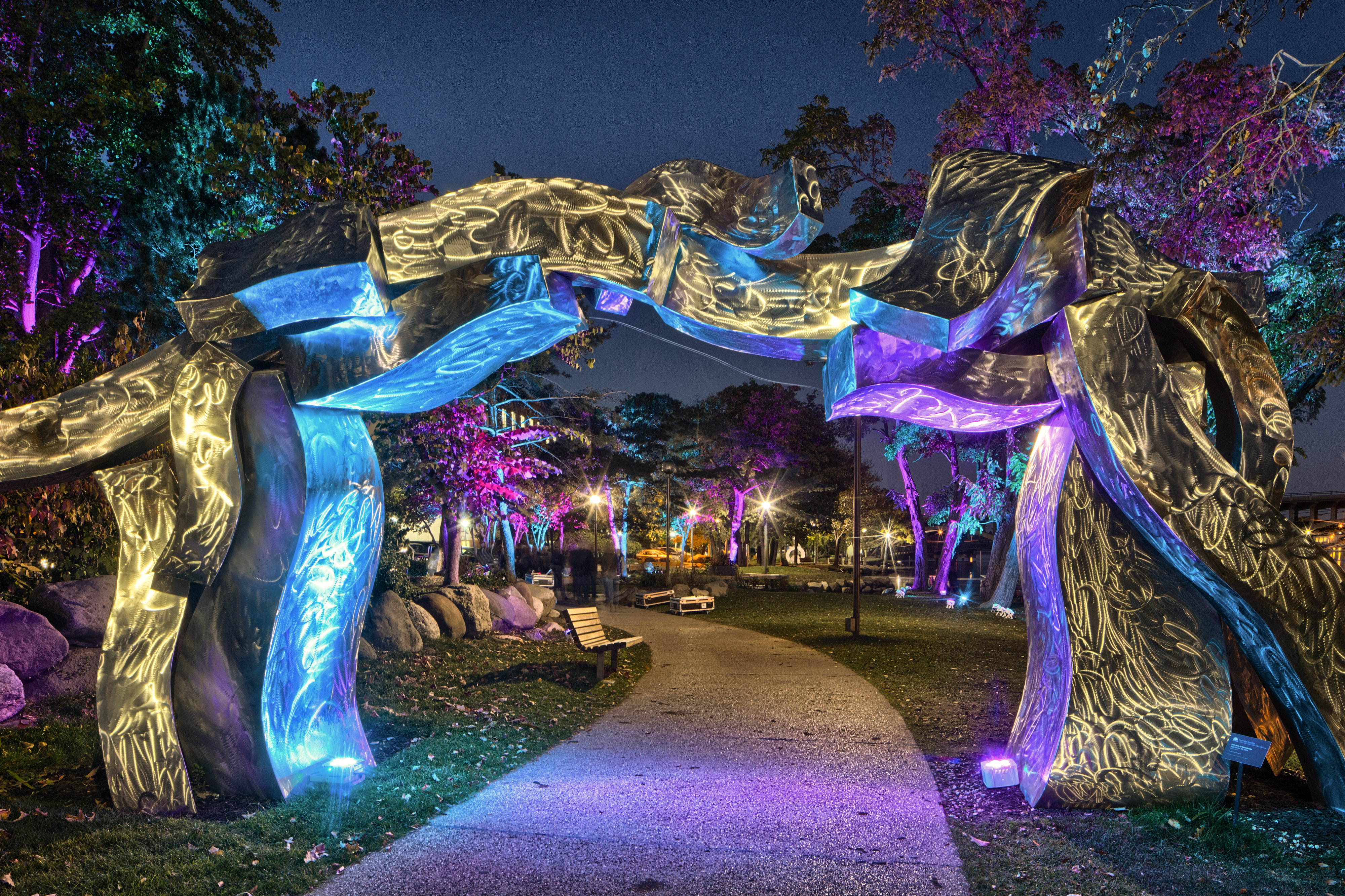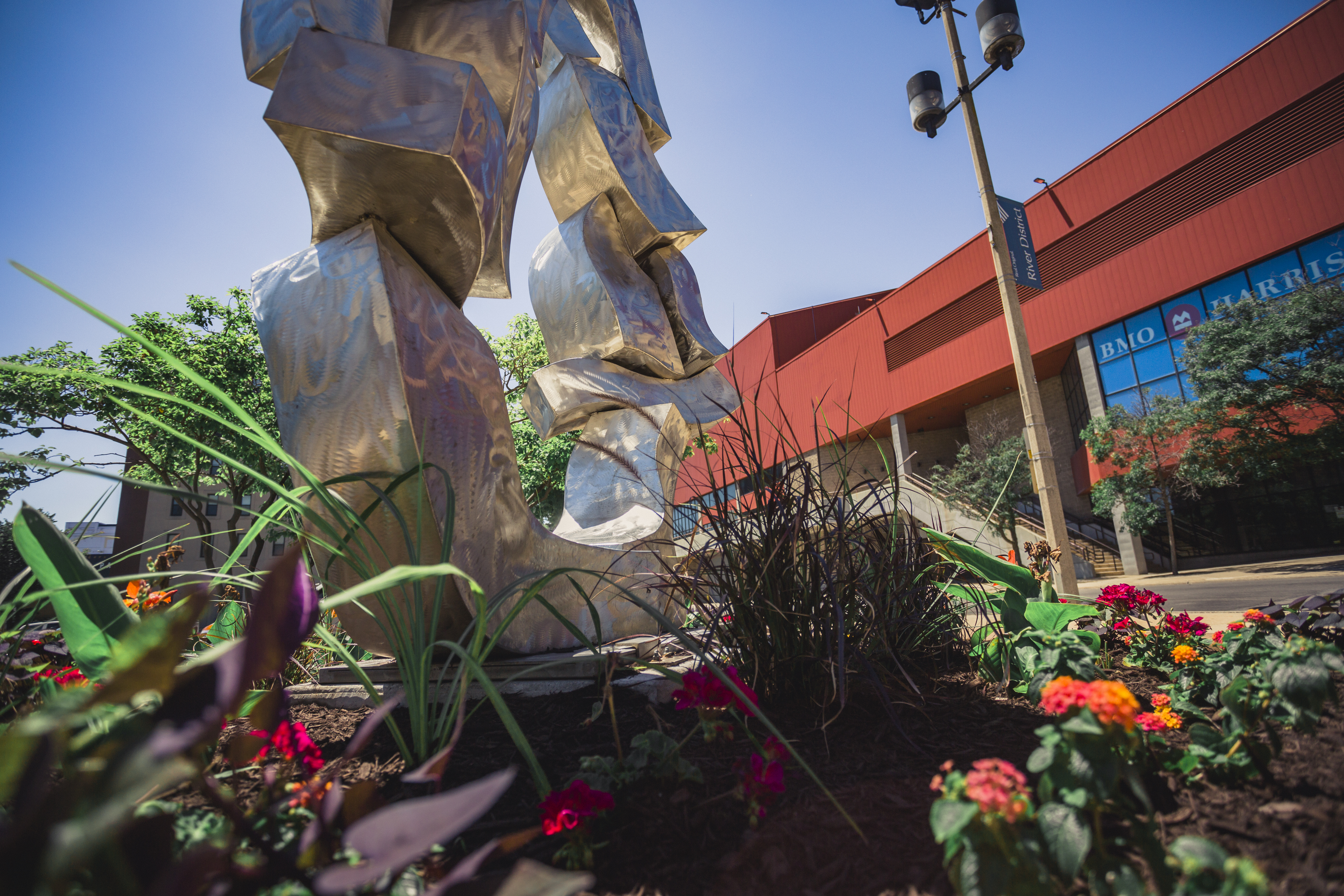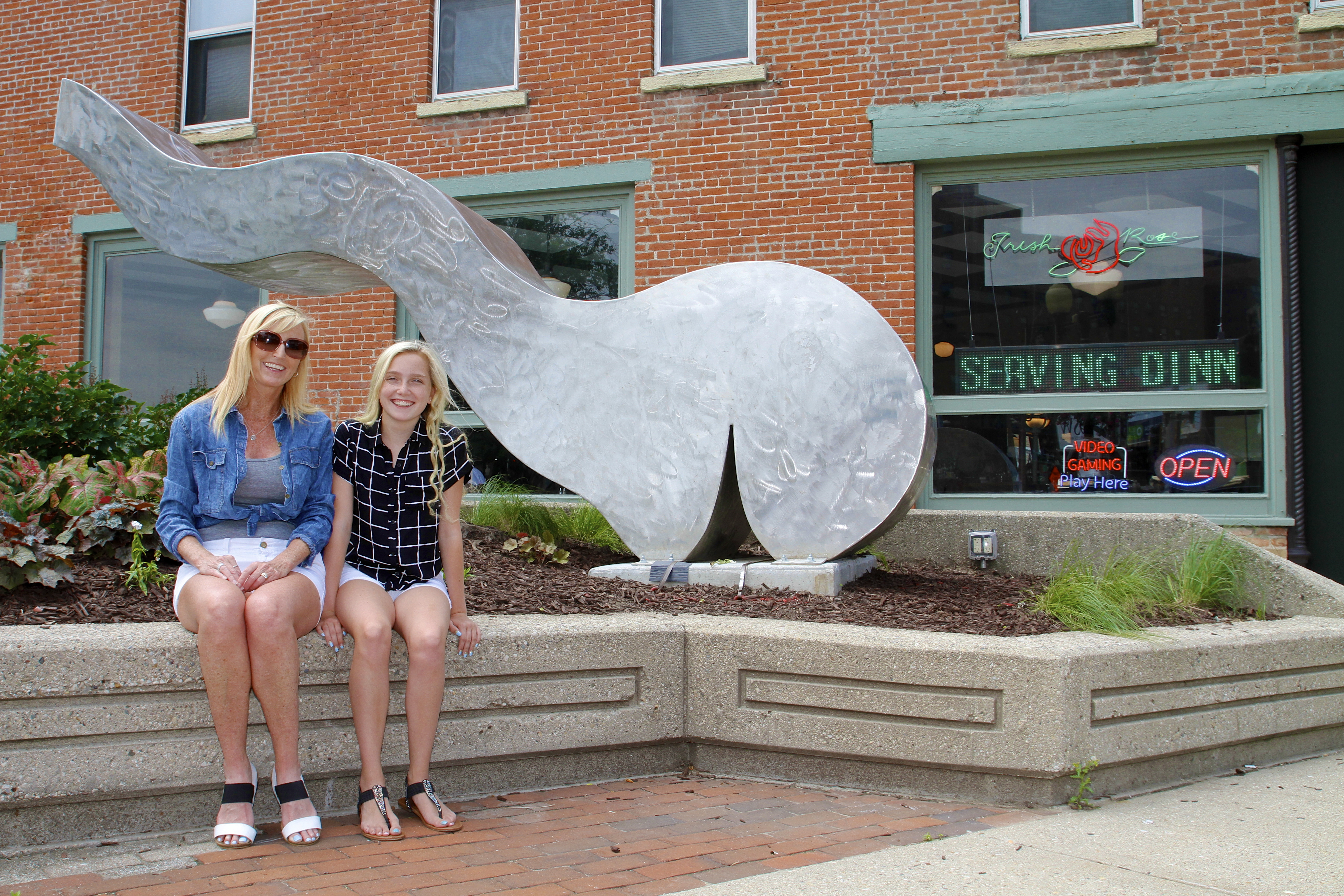Rockford is a city that was built by artisans who came to northern Illinois to sculpt a bright future in the late 1800s through trades like furniture making and textiles, and Rockford is once again on the rise thanks to a crop of budding entrepreneurs that have staked a claim in the future of downtown Rockford.
All the more reason to have monumental bronze, steel and stone sculptures dot the downtown landscape as part of the public art exhibition titled Forest City Beautiful Sculpture Stroll: Boaz Vaadia and Hans Van de Bovenkamp.
The large-scale, abstract and figurative artwork, which will remain on display until June 2017, has garnered positive reviews from residents as they stroll along the riverfront and past downtown businesses. Nine sculptures in total were on display starting in June 2015 and were expected to stay until June 2016; however, the artists generously agreed to extend the loan for another year (one sculpture that was on display at Eddie Green Park has been sold to a collector in Texas).
Learn more about Public Art in Rockford here.
The Rockford Area Convention & Visitors Bureau organized the effort as an extension of its Forest City Beautiful initiative, which works to beautify downtown Rockford. But as much as residents are enjoying the new additions, the artists are enthusiastic knowing their work is attracting a new audience.
“I feel really honored that the city is interested in my work. I’ve been so lucky and blessed that people like what I do,” Van de Bovenkamp said. “I think it’s nice to show Boaz’s work with my work. One is about classical human figures and the other is about abstraction. Having them together is an interesting idea.”

A vibrant idea
John Groh, president/CEO of the RACVB, said that art on a grand scale is something that the RACVB hopes to continue to curate for the community.
“Having these sculptures downtown is part of the bureau’s overall vision for downtown beautification because beautiful spaces are social spaces that are easier to walk and explore,” Groh said. “We want to make downtown more walkable, vibrant, friendly and inviting.”
The idea for the project was inspired by a similar initiative in Sarasota, Florida, through the nonprofit Sarasota Sculpture Center. For the past 14 years, monumental sculptures have been displayed biennially along Sarasota’s bayfront.
Partnering with artists to loan their art boosts the cultural cred for cities throughout the country, minus the upfront expense of buying the pieces. Greater exposure means more chances of the pieces being sold, a win for the artists.
Five of the nine sculptures came to Rockford from Illinois Wesleyan University in Bloomington, Illinois, and they were displayed in Sarasota before that. The RACVB covers the cost of insurance and transportation, as well as landscaping around the pieces. Behr Iron & Metal, a privately held scrap management company in Rockford, helped fund the installation costs for the sculptures. Rockford businessmen and art collectors Dick Behr and Tom Furst helped make the project a reality.

Inspiration for their work
Both artists have lived and worked in New York since the 1970s, and both were youthful immigrants to the United States. Van de Bovenkamp, born in Holland, is known for large-scale, abstract sculptures.
Vaadia, who came to the U.S. from Israel, makes figurative sculptures out of stone and bronze. Log onto YouTube, and you can see a fast-paced video of him carving and assembling a stone sculpture called “David.” For select stone pieces, Vaadia continues the process by casting the sculpture in bronze, creating a limited edition of five to seven works. Bronze is a durable substance that expands the possibilities for placing work in public contexts while connecting the piece to the history of figurative sculpture.
Part of the inspiration for his stone figures came from construction that was happening outside of the studio he bought in 1989. Boulders were scattered throughout the area, and Vaadia loved their shape.
So he bought a forklift and hauled 50 tons of boulders into his empty studio. He said the construction workers who were initially puzzled by his interest were intrigued and remained supportive of the final products.
“On rainy days, I invited them into the studio so they didn’t have to be exposed to the elements,” Vaadia recalled. “Each one of them would find themselves a nice, comfortable position against the boulders. One stood next to a boulder, another leaned on one. It was so simple, but something so special to me. I knew exactly what to do with those boulders. That’s what you see within those particular sculptures.
“As an artist, I always try to be open-minded, to react to the feelings I have. I observe things and understand things.”
One of Van de Bovenkamp’s pieces in Rockford is a series of circles and waves meant to represent the concentric circles seen when a person skips a rock through the water. He said the circle is also a powerful symbol in mythology and Eastern religion.
Van de Bovenkamp made about 40 sculptures in that series, the largest of which is about 35 feet high-by-35 feet wide and displayed along the Hudson River. It’s used as a navigational marker.
Van de Bovenkamp often uses stainless steel for his pieces, high-quality steel used in making boats. He’s inspired by a love of architecture and nature.
“After 50 years, I moved out of New York and am living in the country. As I sit here, I see three chickens. We have horses,” he said. “I love nature, and I love good architecture. Sculpture humanizes the environment. By bringing them into urban neighborhoods, you’re saying to people, ‘Here is a bouquet of flowers.’ They really give people an uplifting experience. It’s an exclamation point, a landmark.”
Rockford is no stranger to landmark art. Groh said the city is a perfect host for the sculptures because it’s already home to well-known pieces such as “Symbol” by Alexander Liberman (near the Sinnissippi Bike Path) and “Cape Variations” by John Raymond Henry (at Beattie Park).
“I really believe that my work is alive when it is in public, when the public can interact with it,” Vaadia said. “It’s extremely important to have those pieces in Rockford because through many years of observation, the thing I found out is that the artwork occurs between the viewer and the work. I have a very strong experience making the piece, but without the viewer, the art does not exist. That exchange is where the magic of art happens.”

















